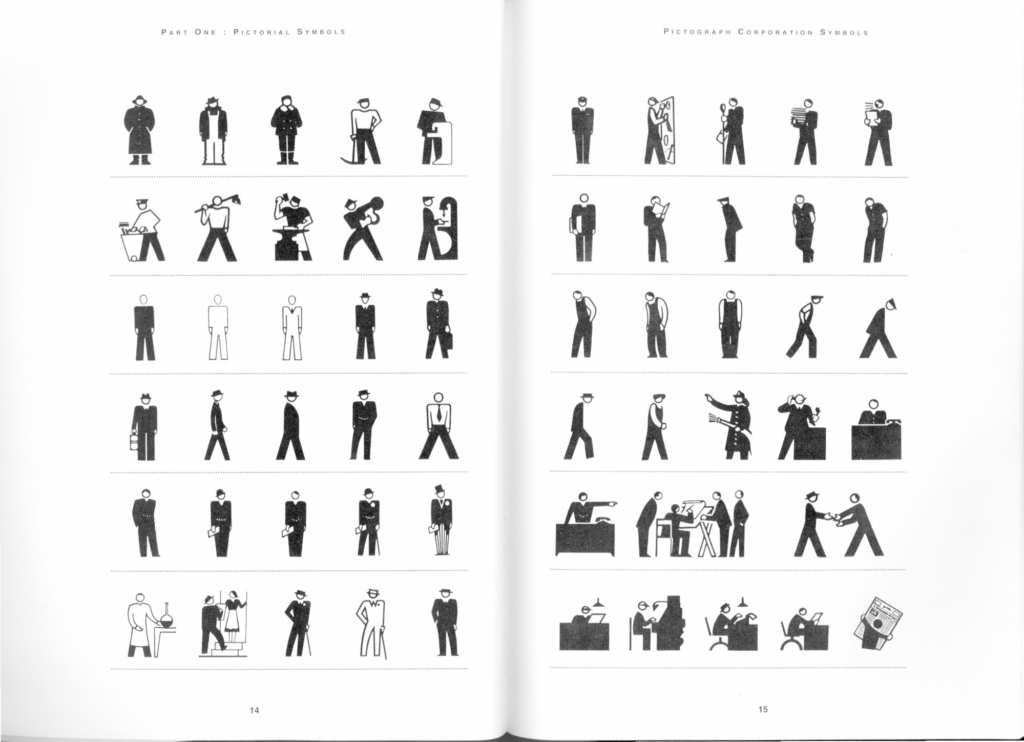This site was created to investigate the historical survey of pictograms from the information design perspective and to explore different directions from contemporary standardized pictograms.
The scope of the pictogram’s history and territory will be limited to the period after the 1930s in North America because it analyzes the history of pictograms in the context of their relationship to ISOTYPE (International System Of Typographic Picture Education), which was conceived by the Austrian socio-economist Otto Neurath and practiced with his team. This approach has its critics since pictograms have been developed in various fields other than isotype, such as road signs and graphic symbols for maps, and the history of pictograms is not limited to isotype. However, in the 1930s, pictograms began to convey the messages more eloquently than ever in the media of prints, exhibitions, and even films, and I believe that the influence of isotypes heavily influenced this development. The central expressive form of Isotype was pictorial statistics. In the 1930s, these normative capabilities of Isotype attracted attention and resulted in the emergence of a certain type of culture worldwide—a “pictogram culture.”
The United States was one of the countries most affected by Isotype. This was primarily due to its conformity with the New Deal policies implemented to overcome the socioeconomic problems caused by the Great Depression. In addition, the presence of Rudolf Modley, who had gained experience at the Social and Economic Museum of Vienna (Gesellschafts-und Wirtschaftmuseum in Wien) led by Neurath. Modley worked to popularize and develop the idea of Isotype (formerly known as the Vienna method) in the US. He also contributed to the later standardization of pictograms. Thus, Modley was a valuable catalyst between the Isotype era and the standardization movement of pictograms that flourished from the 1950s onward.

Modley‘s book, Handbook of Pictorial Symbols (1976) effectively demonstrates the characteristics of his work. The first half of the book, titled, “pictorial symbols section,” is devoted to a variety of pictograms produced by Modley’s company from the 1930s to the 1940s along with Isotype symbols, and the second half titled the public symbols section, contains various pictograms from the period when standardization was being promoted. Here, we will particularly focus on those produced by Modley in the first half of the collection.These pictograms show that there have been many more design variations before standardization. Their aspect may be nothing but “chaos” from the perspective that standardization was the ultimate goal. However, on closer analysis, it is clear that their diversity was also created from the interrelationship with the visual culture adjacent to pictograms, not to mention practical demands. However, to understand this, it is necessary to explore the cultural context in which pictograms were used during this period.
In this website, we will focus on the interaction with the distinctive North American culture of illustration, comics, and animation of the same period, in addition to pictorial statistics. In addition, we will conduct historical research and explore pictograms that differ from the path to standardization, with the aim of providing suggestions for contemporary pictograms. To this end, we will operate as a small group called the “Pictogram Study Group” and plan to add more documents as they become available.
Hisayasu Ihara (Faculty of Design, Kyushu University; Pictogram Study Group)
Acknowledgments. This site was established under the support of JSPS KAKENHI Grant Number JP19K12660.